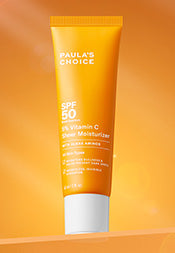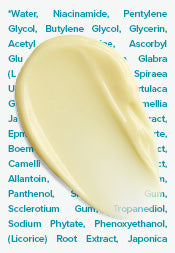Alcohol in Skincare: The Facts
With how much misleading information there is online in regard to alcohol in skincare, it’s easy to see why some people believe it really isn’t all that bad for skin. However, the research makes it perfectly clear that alcohol, as a main ingredient in any skincare product, is a problem.
We know we can’t convince everyone, but with the latest research, and sobering facts about alcohol-based products, hopefully it’ll help you put down the bottle if alcohol is lurking at the top of the ingredient list of your favourite skincare products.
But first, we need to clarify what kind of alcohol in skincare we want you to avoid.
Bad vs Good Alcohol in Cosmetic Formulas
When we express concern about the presence of alcohol in skincare or makeup products, we’re referring to a drying type of alcohol that you’ll most often see listed on an ingredient label as SD alcohol, denatured alcohol, or, less often, isopropyl alcohol. These types of volatile alcohols give products a quick-drying finish, immediately degrease skin, and feel weightless on skin, so it’s easy to see their appeal, especially for those with oily skin.
But these short-term benefits have negative long-term consequences.
When you see these names of alcohol listed among the first six ingredients on an ingredient label, without question, they will aggravate and be cruel to skin. No way around that, it’s simply bad for all skin types. Consequences include dryness, disruption of the surface of the skin's microbiome and barrier, and a strain on how skin replenishes, renews, and rejuvenates itself. Alcohol just weakens everything about skin.
Just to be 100% clear, there are other types of alcohols, known as fatty alcohols, which are absolutely non-irritating and can be exceptionally beneficial for skin. Examples you’ll see on ingredient labels include cetyl, stearyl, and cetearyl alcohol. All of these are good ingredients for dry skin, and in small amounts, fine for any skin type, as they give a pleasing texture and help keep ingredients stable in products. It’s important to discern these skin-friendly forms of alcohol from the problematic types of alcohol.
Likewise, you may have heard that alcohol is a good ingredient because it helps other ingredients like retinol and vitamin C absorb into the skin more effectively. Although it’s true that it does enhance the absorption of ingredients, alcohol also destroys the skin’s surface and the very substances that keep your skin healthy over the long term. There are certainly other, gentler ways to get good ingredients into the skin, without damaging its outer layer, an issue that causes more problems than benefits. For example, azelaic acid, a skin-friendly dicarboxylic acid, can be used for mild exfoliation that helps in refining the skin's surface. Azelaic acid for skin diminishes the appearance of blemishes, helps fade post-acne marks and also reduces skin sensitivity.
How Alcohol Damages Skin and Makes Breakouts Worse
If your skin is oily, it can be tempting to use alcohol-based products because they provide an immediate matte finish, essentially de-greasing the "oil slick." The irony of using alcohol-based products to control oily skin is that the damage from alcohol can lead to an increase in bumps and enlarged pores.
And get this: Alcohol can actually increase oiliness, so the immediate de-greasing effect is eventually counteracted, prompting your oily skin to look even more shiny. Talk about spinning your wheels!
Final Thoughts
The research is clear: Alcohol harms your skin’s protective surface, depletes vital substances needed for healthy skin, and makes oily skin worse. To put it simply, it’s pro-ageing. Given the hundreds of skin-friendly alternatives that are available, it’s a no-brainer to abstain from products front-loaded with the skin-damaging forms of alcohol.
The sole exception to alcohol use on skin is in the case of hand sanitisers. Such products require at least 60% alcohol (ethanol) in order to most effectively kill illness-causing viruses and germs. Soap and water are preferred for hand hygiene throughout the day, but in the absence of convenient access to this method, using a hand sanitiser is the next best thing. The exposure to alcohol isn’t ideal, but unlike alcohol in facial skincare, alcohol-based hand sanitisers serve a necessary health-protecting purpose.
Learn more about caring for your oily skin.
Shop globally loved skincare essentials for oily skin from Paula’s Choice.
References for this information:
Journal of Hospital Infection, August 2019, pages 419-424
Journal of Investigative Dermatology, October 2018, pages 2,234-2,243
International Journal of Cosmetic Science, April 2017, pages 188-196
Toxicology and Applied Pharmacology, November 2014, pages 109-117
Drug Design, Development and Therapy, November 2015, pages 6,225-6,233
The Journal of Allergy and Clinical Immunology in Practice, March 2013, pages 195-196
Biochimica et Biophysica Acta, May 2012, pages 1,410-1,419
Experimental Dermatology, October 2009, pages 821-832
Journal of Occupational Medicine and Toxicology, November 2008, ePublication
International Journal of Toxicology, Volume 27, 2008, Supplement pages 1-43











